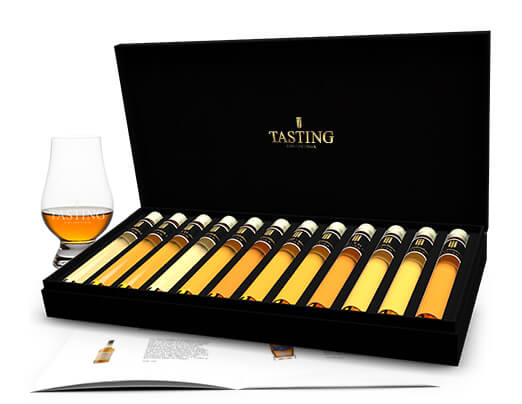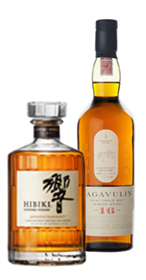TeaThee is er in heel veel verschillende kwaliteiten en merken. Tasting Collection heeft de beste kwaliteiten van over de hele wereld in collectie bij elkaar gebracht. Zodat je niet alleen over de herkomst en het productieproces van thee leert, maar direct ook de beste theeën ter wereld krijgt gepresenteerd en zelf kunt ervaren hoe ze smaken als ze op de ‘juiste’ manier worden gezet. |
Making tea: how do you do that?
Each culture has its own way of preparing tea. The English drink their tea strongly with milk, the Chinese drink their tea ‘Gong Fu Cha’ (tea with great skill) and the Turks prefer to put a lot of sugar in their tea. What all methods have in common is the use of the finest quality loose tea, which is poured into a teapot with hot water
The easiest way to prepare this loose tea yourself is with a teapot and a tea strainer, egg, filter. It is important that the tea leaves have enough space to unfold, so that the aroma and taste are fully expressed.
For coarse-leaved loose tea, you prefer to use a team maker, tea press or put the tea loose in the teapot. For the right temperature, use a special tea thermometer, a kettle with temperature regulator or go off to your liking. Pour the water on the tea and keep a close eye on the time, for example with a tea timer. Of course personal preference also plays a role. During the drawing process, the tea must remain at the right temperature. So put the teapot on a tea light or keep the tea warm under a tea cap.
Tea Temperature
We recommend that you drink your tea the way you like it best. Tastes are different. As a guideline, however, we do give you instructions on how to brew all our teas, so that you know how water, temperature and tea can affect each other.
Below you see per species the ideal temperature to convert:
Type of tea |
Temperature |
| White tea | 80ºC |
| Yellow tea | 80ºC - 85ºC |
| Green tea | 65ºC - 80ºC |
| Black tea | 90ºC - 100ºC |
| Oolong tea | 100ºC |
| Pu Ehr Tea | 95ºC - 100ºC |
| Rooibos Tea | 100ºC |
| Herbal Tea | 100ºC |
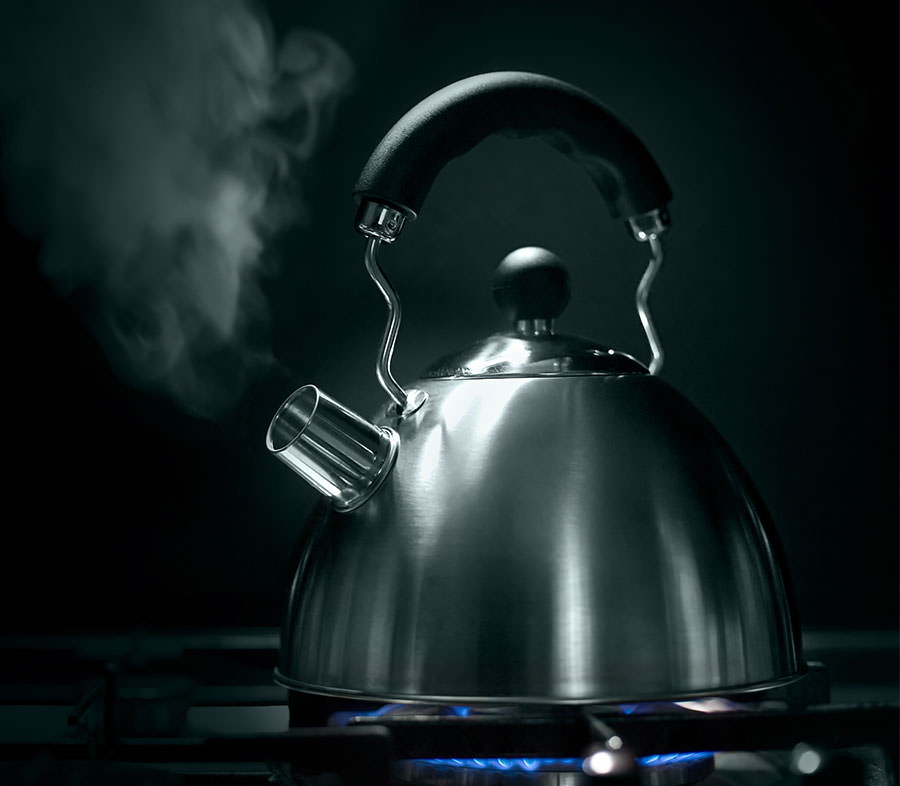
The right quantity
We recommend experimenting with the quantity. Each Tasting Collection tea-tube gives enough tea for a number of cups, so experiment to your heart's content.
How long should you keep the Tea in?

You probably know the warning to take the teabuilt out of the water after a few moments. Logical, because a tea of inferior quality quickly tastes very bitter. However, a good quality tea doesn't taste extremely bitter! Do the test! Try a tea of a very good quality (for example that from the Tasting Collection), make it in the evening before going to bed and taste it in the morning.
How long can a tea last? Very simple, as long as you like! You can make the taste stronger or softer depending on what you like to drink yourself. Keep in mind that the leaves need at least 15 minutes to release their antioxidants to the water. By the way, did you know that you can pour in the same tea leaves several times with hot water? The taste becomes a lot milder with every cast, but the leaves continue to release antioxidants to the water.
Be careful not to drink your tea too hot. Drinking too hot tea (hotter than 70 degrees Celsius) is associated with a higher risk on esophageal cancer.

The influence of water on the taste of tea
Drawing tea in hot water releases mainly aromas and flavours, including theonium nitrate. Theïne is another name for cafeïne, a substance that has an effect on human functioning due to its mild stimulating effect. Many people feel more alert after using cafe. A cup of tea contains on average 30 milligrams of cafeïne, a cup of coffee 75 milligrams of cafeïne. Besides cafeïne, tea also contains theanine and fluoride.
Not only the tea, but which water you use to make your tea is decisive for the end result. After all, tea consists of 99% water. The quality of the water you use to make your tea affects its taste and aroma. Lime and minerals in the water react with the enzymes in the tea and change the taste and aroma. Tap water does not give the best result. It generally contains too many minerals and the dry residue content is too high to achieve an optimal result. The best is a pH of 7 and a dry residue of less than 50 mg per litre. With the use of special filters or reverse osmosis filtration, the content of minerals and dry residues can be reduced to the right soft and clean water to obtain an optimal quality for the preparation of tea. You can also use bottled mineral water. In the Netherlands Spa Blauw is the most neutral water with a pH of 6 and a dry residue of 33 mg per litre. Especially with delicate teas like white tea, green tea and slightly oxidized Oolongs the difference is enormous.
The history of tea
According to a Chinese legend, Emperor Shen Nung was the discoverer of tea in 2737 BC. As a herbalist he believed that drinking boiled water could contribute to good health. From a hygienic point of view, he demanded that his subjects and staff members boil the water before consuming it. One summer day, while visiting a distant region, he stopped his retinue to drink. During the boiling of the water by his servants, some dried leaves fell from the tea bush into the water, spreading a pleasant scent. When the emperor drank the drink he noticed that it was very refreshing and aromatic.

Initially, tea was only considered a medicine. Only during the Tang and Song Dynasty (300 AD) did tea drinking become part of the daily Chinese tradition. During the Tang dynasty, after twenty years of study, Lu Yu published the first book on tea: Cha Ching. In this book he described the production of tea, the importance of good water and the right way to make tea. Between the Yuan and Qing dynasty, the Chinese government stimulated the development and production of tea and the construction of tea houses, so that everyone could enjoy tea.
In the ninth century, tea drinking spread to Japan and became an art form. The earliest mention of tea in western literature dates from 1559; this year a book called "Navigatione et Viaggi", compiled by Giambattista Ramusio, was published in Veniceë a collection of various travel stories, including the report of a Persian merchant named Hajji Mohammed, who had met the "Chiai Catai" during a visit to China. A drink prepared by boiling leaves (not known as tea leaves at the time) in water. After the middle of the sixteenth century, some Portuguese and Italian clergymen, who had travelled as missionaries through China and Japan, also mentioned tea consumption when describing their experiences.
Countries
Tea is produced in many countries around the world, being the best known and largest tea producing countries:
- China
- India
- Japan
- Sri Lanka (Ceylon)
- Taiwan
There are also a number of countries that are producing more and more tea and are becoming more popular these are countries like:
- Nepal
- Afrika
- Indonesia
- Vietnam

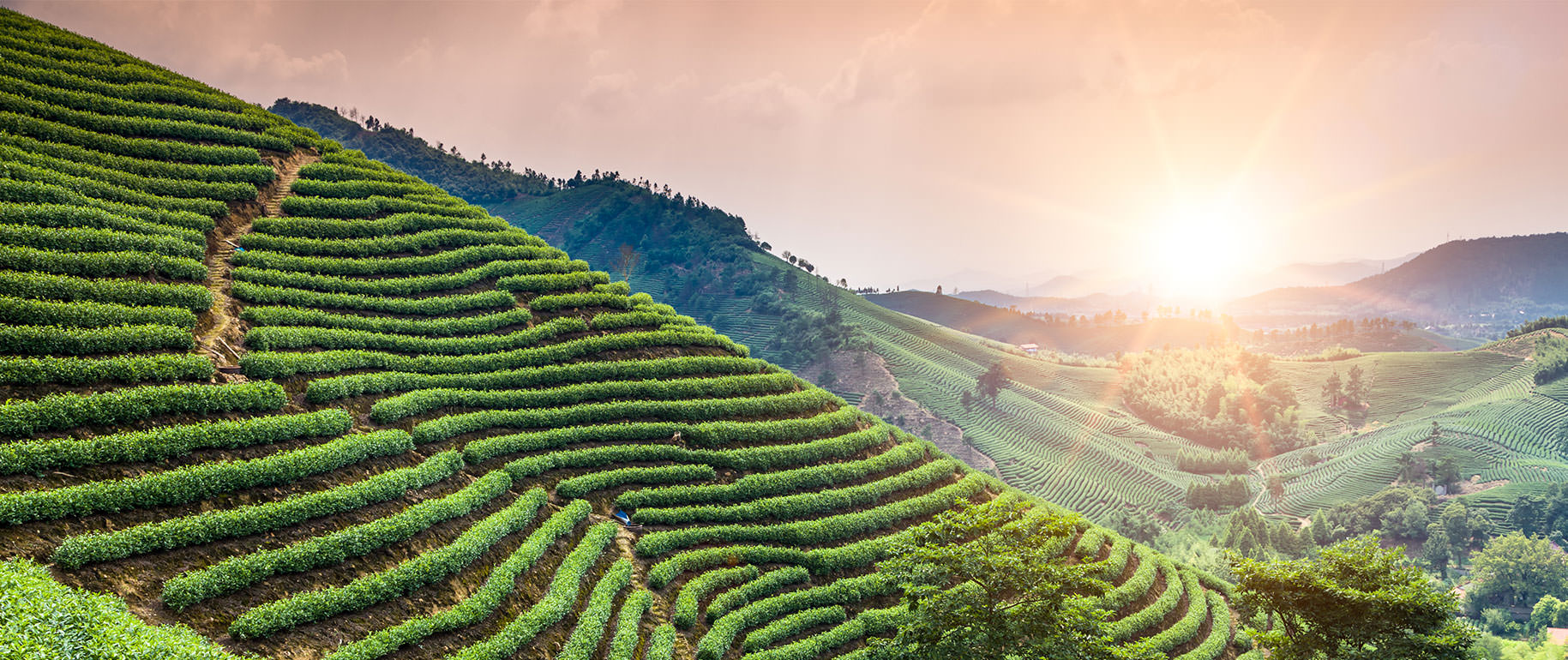
Growing and producing tea
The taste of the tea is determined by the type of tea, the climate, the area, the method of pruning and picking and the final production.
Climate
Tea bushes grow in a tropical or subtropical climate. To grow tea, high temperatures, sun and sufficient moisture are needed.
Area
The plantations are usually located on a mountain slope. The higher the plantation is, the better the quality of the tea will be. As with whisky and olive oil, you can taste the soil in tea. This is how you taste the minerals in tea that grows in the mountains.
Pruning Tea
Pruning is, besides picking, one of the most important processes that directly affects the productivity of the tea plant. If the tea plant is not pruned or pruned too late, this has a negative impact on the harvest. Most teas are nowadays cut and therefore no longer grown from the seeds of the tea berries.
After about 6 months a tea bush is pruned for the first time. Pruning is called that. After 3 to 4 years it can be harvested for the first time. Harvesting is done by hand or machine. Only the young leaves are harvested. Manual picking gives the best results. Harvesting can take place throughout the year. Every 5 to 6 years a tea bush is completely pruned back. Tea bushes can be between 120 and 140 years old.
Flanging Tea
The operation to extract moisture from the tea leaves is ‘verflensen’. This makes further processing possible. The flaking of the tea leaves takes place at a temperature of 25 to 30 degrees Celsius. This temperature causes the tea leaves to wilt, making them soft and flexible.
Rolling Tea
An operation to extract the leaf juices, the remaining moisture from the leaves from the tea leaves is the rolling of the leaves. The leaves are rolled between two horizontal abrasive surfaces for about half an hour, releasing the leaf juice. The moisture must come out of the leaves, otherwise oxidation, the heating of the leaves, will not be possible.
Oxidizing Tea
The rolled leaves are oxidized in a few hours in the oxidation chamber, which is at a temperature of 25°C. Oxidation is caused by the enzymes present in the tea leaves. This leads to the formation of all kinds of flavorings in the tea and to the different forms of tea, from green unoxidized to black fully oxidized tea. Oxidizing the leaves is necessary to obtain colour and aroma. By adding air with a humidity of 95%, the colour and aroma is obtained. The time the tea spends in the oxidation chamber largely determines the character of the final tea. The oxidation process is stopped by heating and drying the leaf.
Fermenting Tea
Fermentation consists of the external action of bacteria and yeasts on the tea leaves, a bit like fermentation in wine. Composted tea is less respectful here. But a single tea, Pu-Erh tea, is really fermented and not oxidized.
Drying Tea
Tea leaves are dried at a temperature of about 95 degrees Celsius. The aim of drying is to reduce the moisture content to 4 à 6%. The tea is now dark in colour. After all these operations, about 100 kilograms of picked leaves, about 20 kilograms of black tea remain.
Sorting Tea
After drying, the tea leaves are sorted by size using large shaking sieves. The now broken tea leaves are now separated by size and placed in different containers. This means that a number of sizes of tea remain after sorting.
Tea leaves in Southeast Asia were compressed into tea blocks. These were used to make tea for drinking and were also used as food and currency.
Tea varieties

Besides all kinds of blends and varieties with an added flavour, there are the following teas:
Black tea
The most popular tea. This tea is fully oxidized.
English blend: a commonly used name for a mixture of black tea.
Ceylontea:
Originates from Ceylon (Sri Lanka). Sometimes even named after a certain region on Ceylon, like Kandy.
Earl Grey Tea
A mixture of black tea, flavored with a tropical fruit, bergamot.
Darjeeling Tea
Highly appreciated tea from the Darjeeling region of India, at the foot of the Himalayas. Darjeeling First Flush, the first pick of Darjeeling tea of the year, is considered the 'champagne' among teas. The fine hand-picked first two top leaves give it its tastiest soft taste. It is also one of the most expensive teas, flown in every year in May.
Lapsang souchong Tea
This tea is dried over a fire of coniferous wood, which gives a strong smoky taste to the tea.
Oolong Tea
This is semi-oxidized tea and therefore contains less caffeine.
Green Tea
Niet geoxideerde, gestoomde theeblaadjes. Jasmijnthee is een heel bekende vorm van groene thee waar jasmijnbloesem toegevoegd werd.
White Tea
White tea is tea is its purest form. White tea is made from carefully hand-picked young leaf buds, even before the leaf has been able to unfold. These young shoots and young leaves often have a silver-white layer of down, which becomes even more visible when the tea is dried. Hence the name 'white tea'. White tea undergoes as little processing as possible. After picking and withering, the leaves are rolled lightly and then dried in the sun or baked lightly.
Assam Tea:
Originates from Assam district in India.
Yellow Tea
The rarest tea, the production process is strictly monitored, presumably a slightly oxidized tea from young tea buds.
Pu-Erh Tea
This is the only fermented tea. This tea can also be stored for more than 50 years.
Herbal Tea
Often various herbs are made as tea, but these are not actually tea because they do not come from the Camelia Sinensis. We call this an infusion. Examples are:
- Rooibos
- Liquorice
- Chamomile
- Mint tea
- Stinging nettle Tea
Tea ceremonies

The Netherlands
Although generally in the Netherlands and Belgium not so much attention is given to the tea ritual, in East Friesland three cups of tea are consumed five times a day. A lump of candy is placed in the cup and the hot tea is poured into it. Then a spoonful of cream is added. There is no stirring, so that the tea, cream and sugar are tasted successively. After the third cup the sugar is as good as dissolved. Because you drink three cups at a time, the cups are considerably smaller than the usual Dutch cups.
United Kingdom
In the United Kingdom, afternoon tea consists of relatively strong tea with milk and sugar. For example, scones (minibreads) are served, sometimes sandwiches, and all kinds of biscuits and cakes. "High tea" is the evening meal, usually simply called ‘tea’s..
High tea is not synonymous with afternoon tea. High tea was created at the end of the eighteenth century during the Industrial Revolution. Workers came home exhausted at the end of a long working day. Their meal consisted of various types of meat, bread, butter, pickled acid, cheese and how else, tea. So no exclusive snacks that were on the table at the higher table. Because the food was consumed at a dining table, unlike the low tea tables of afternoon tea, it was called high tea.
Japan
The Japanese tea ceremony is world-famous. The ceremony, inherent in the Zen tradition and subject to very strict rules, lasts for hours. A lot of attention is paid to good manners and every action is performed in detail according to the ancient rules. The green tea, in powder form matcha, is beaten in a bowl with special teaware. The bowl is then placed by the fireplace. The main guest takes the first three sips, and then passes the bowl on to the other guests. "Sado", the way of drinking tea, is also part of the Japanese Zen culture.
South America
In South America, the Mate, a mixture of young leaves and sprouts, is popular. In a calabaze, a hollowed out gourd, the tea is made and served. The Mate is drunk with a metal or wooden pipe, the bombilla, which stops the drab.
Tropical countries
A teaparty in the tropics around five o'clock is currently very popular. Tea forms the basis of course, preferably as a cooled and refreshing drink. The accompanying delicacies, sweet or savoury, are made from banana, coconut, pumpkin or sweet potato. If the summer is good, a tropical teaparty like this is not out of place in the Netherlands.
Egypt
In Egypt, Pakistan and Saudi Arabia, people drink black tea, preferably strong and very sweet tea from India or Sri Lanka.
Turkey
Turks drink more tea than coffee in their coffee houses. There is always a pot of tea on the fire. It is tradition in Turkey that all future brides have to master the art of tea making, the demilikacay.
In Turkey, Russia and Iran tea is made in a Samovar, in which hot water is stored. This is used to make very strong tea, which is kept warm on top of the Samovar. To drink the tea, some of the strong tea is poured in and diluted with water from the Samovar.
Tibet
In Tibet, tea is used in the form of tiles, on which images are printed in relief. A piece of the tile is broken down, with water, yakbutter and salt tea is made from it. Tibetan tea culture consists almost exclusively of butter tea and milk tea.
China
Since the Cultural Revolution, Chinese tea culture has been almost limited to the family sphere. Previously, there was a lively tea ceremony that mainly concerned the green tea variant. But until the trains hot water is offered for tea, which is then made out of mugs or cups with a lid and drunk (the lid stops the leaves).
Morocco
In Morocco the mint tea (Atay Benaanaa or Tuareg tea) is drunk from small tea glasses. Although the ceremony is not so pronounced, the preparation is strictly ritual. First the Chinese green tea (Special Gun Powder), which forms the basis of mint tea, is put in a metal teapot and washed with a dash of boiling water. After pouring off the water, the sugar and fresh leaves of the mint go into the pot and the boiling water is poured onto it. Then some fresh tea leaves are added. The tea must then boil for another 5 minutes. The first glass of tea that is poured out of the pot is poured back into the pot so that all the flavours are well mixed. Then the glasses are poured in, preferably as high as possible so that a layer of foam on the tea comes. Moreover, the high pouring of the tea is a symbol of hospitality. This is especially done when there are visitors, because the higher the more hospitable.
Tea & Food pairing

In western countries we are more accustomed to drinking wine with dinner. In China and Japan however, tea is drunk more often than wine. Often people drink the local tea with the local dishes and that usually fits perfectly. Just like with wine, you can also use tea for the unique explosion of taste of 1 + 1 = 3 creëren. Compared to wine, tea has a number of advantages. It contains no alcohol and is naturally more complementary to food.
When combining tea with a dish you proceed in the same way as with the wine-food combination. First determine the goal you are aiming for.
The goal of tea when eating can be different:
- Refresh, rinse mouth clean of strong flavours, for example between the courses
- Strengthen a taste in your dish
- Remove full feeling
- Stimulating digestion
Then you will taste it. It remains very personal and there are no fixed guidelines. However, there are some basic rules that can help you.
Basic guidelines tea & food pairing:
White Tea
Neutralizes the taste, rinses the mouth clean between two courses. And a great combination with spicy dishes and cheese.
Green tea
To put it bluntly: white wine goes with the dish, then green tea goes with it! Japanese green tea goes perfectly with seafood, fish and rice dishes. Chinese green tea combines beautifully with green salads, cheese and chicken.
Black tea
To put it bluntly: red wine matches the dish, black tea matches! The full, rich taste of black tea with strong tannins goes well with rich, full, creamy dishes such as grilled meats, curries, but also chocolate desserts or crème brûlée.
Oolong Tea
Strongly dependent on the level of oxidation and roasting. Slightly oxidized and roasted Oolongs go well with light dishes, similar to green tea. Heavily oxidized and roasted, think of full rich dishes, are similar to black tea.
Pu Ehr Tea
Pu Ehr tastes very good with full dark chocolate and ‘warm’ spicy dishes with for example cinnamon and cardamon.
Rooibos Tea
Rooibos combines the sweet, spicy with vanilla tones delicious with sweet dishes.
So it is often a matter of trying and tasting, so you discover the most beautiful combinations.
Team with a biscuit we all know. But there's no need to drink tea alone between meals. Try making tea in a culinary way. Combining tea with dishes can be compared to combining wine and food. Apart from each other it is delicious, but together they can give a taste exhibition.
Besides combining tea with dishes, tea can also be used as an ingredient in a dish.
A tea sommelier, what is that?
When you think of a sommelier, you immediately think of wine; of someone who selects the wines with the dishes and tells you the story behind the wine at the table. This is no different for a tea sommelier. He can taste like no other, combines tea with food in a way that the aromas and taste are optimally expressed and makes the most beautiful tea cocktails. Robert Schinkel, winner of the first tea sommelier competition of tea manufacturer Dilmah, explains that tea, for example, helps to soften the sharpness of cheese or to bring out more taste aspects in the cheese. On the other hand, cheese can accentuate the tasty maltiness of tea, or contrast the bitterness of tea. With chocolate you need to balance the bitter aftertaste of dark chocolate with rich and robust tea with a prominent character. The darker the chocolate, the more powerful the tea should be.
Saving Tea
The aroma and taste of the tea in your Tasting Collection will be retained for a long time if, after use, the cap is properly replaced on the tube and stored in a cool and dark place, but not in the refrigerator.
Drawing tea in hot water releases mainly aromas and flavours, including theonium nitrate. Theïne is another name for cafeïne, a substance that has an effect on human functioning due to its mild stimulating effect. Many people feel more alert after using cafe. A cup of tea contains on average 30 milligrams of cafeïne, a cup of coffee 75 milligrams of cafeïne. Besides cafeïne, tea also contains theanine and fluoride.
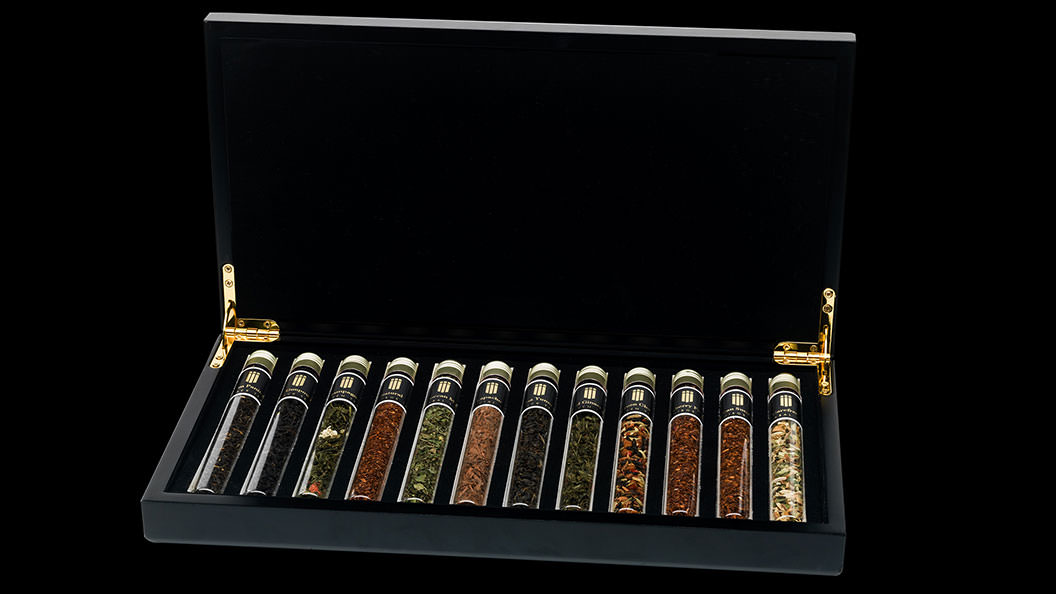
Tea Tasting Tasting Collection
Have you become excited and want to taste the best teas? Then order a Tea Tasting Collection, try them all and find out which Tea you like best!

